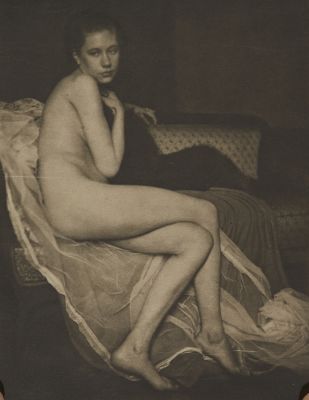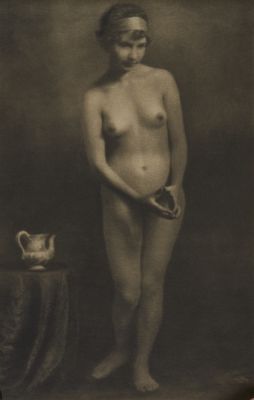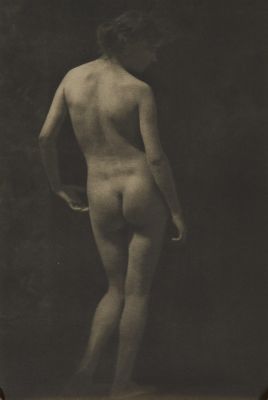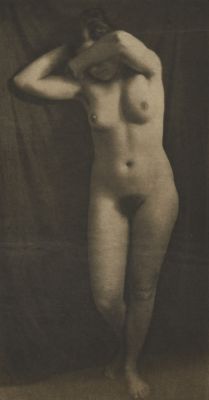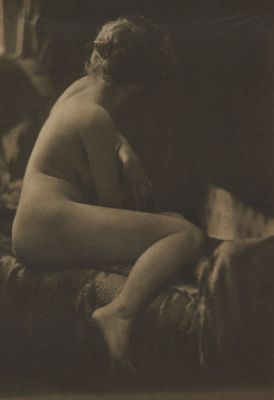
Title
Plate 2Artist
Debschitz-Kunowski, Wanda von (German, 1870-1935)Publication
Der AktDate
1918Process
Photogravure (chine-collé)Atelier
Einhorn-Verlag Dachau bei MünchenImage Size
14.2 x 23 cm
Der Akt – Zwanzig photographische Aufnahmen weiblicher Körper nach der Natur (The nude – twenty photographs of the female body taken from life) is a collaboration by three photographers: the established Hungarian photographer Prof. Jozsef Pésci and German photographers Wanda von Debschitz-Kunowski, and Luise Germaine Krull. Containing twenty images of the female form, the book has no text apart from the title and index page. The studio nudes are all in the ‘pictorialist’ style, reflecting the fashion and taste of the late 1910s. At just 21, Germaine Krull still seems to be searching for her own photographic language, wavering, as she does, between the photographic styles of her more mature colleagues. Krull used more natural daylight settings, which gives her images a less formal mood. The works included in this book are like photographed versions of classical academic studies. Many are reminiscent of the works of painters, such as the German artist Georg Papperitz. This publication is widely known as Germaine Krull’s first book publication, and therefore an important and appreciated volume. Though the youngest photographer featured here, Krull went on to become the best-known of them all. The 20 photogravures, as well as the title and index sheet, are printed on tissue and individually mounted on stiff Japanese paper. The book was published in a regular version, and a half leather-bound version of 50 copies. The print run of the regular half cloth-bound edition remains unknown. 4 photographs by Prof. József Pésci (b. 1889) 9 photographs by Wanda (Wilhelmine Auguste) von Debschitz-Kunowski (b. 1870) 7 photographs by Luise Germaine Krull (b. 1897) Published by Einhorn-Verlag Dachau bei München 1918 “Im fünften Kriegsjahre” (trans: In the fifth year of the war) A second edition and further 50 half leather-bound copies were published 1920. [1]
References
[1] Schiele, Egon Witness of Her Era: Germaine Krull and the Expression of the Neue Frau Between 1919 and 1938 A Thesis Presented to the Faculty of the Department of Art History, Theory, and Criticism School of the Art Institute of Chicago, 2019

